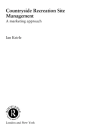Simulation and molding are efficient techniques that can aid the city and regional planners and engineers in optimizing the operation of urban systems such as traffic light control, highway toll automation, consensus building, public safety, and environmental protection. When modeling transportation systems such as freeway systems, arterial or downtown grid systems, the city planner and engineer is concerned with capturing the varied interactions between drivers, automobiles, and the infrastructure. Modeling and simulation are used to effectively optimize the design and operation of all of these urban systems. It is possible that in an urban simulation community workshop, citizens can work interactively in front of computers and be able using the click of the mouse to walk up to their own front porch, looking at the proposed shopping mall alternatives across the street from virtually any angle and proposed bridge or tunnel and see how it can reduce traffic congestion. Buildings can be scaled down or taken out, their orientation can be changed in order to check the view and orientation in order to have better site with efficient energy-conservation. The stone or brick material on a building can be replaced by colored concrete, or more trees and lampposts can be placed on the site. Such flexibility in simulation and animation allows creative ideas in the design and orientation of urban sites to be demonstrated to citizens and decision makers before final realization.
Mohammad S. Obaidat & Georgios I. Papadimitriou
Applied System Simulation [PDF ebook]
Methodologies and Applications
Applied System Simulation [PDF ebook]
Methodologies and Applications
Achetez cet ebook et obtenez-en 1 de plus GRATUITEMENT !
Langue Anglais ● Format PDF ● ISBN 9781441992185 ● Éditeur Mohammad S. Obaidat & Georgios I. Papadimitriou ● Maison d’édition Springer US ● Publié 2012 ● Téléchargeable 3 fois ● Devise EUR ● ID 4709904 ● Protection contre la copie Adobe DRM
Nécessite un lecteur de livre électronique compatible DRM












